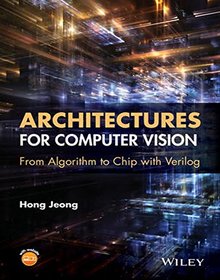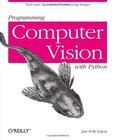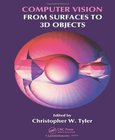Architectures for Computer Vision
From Algorithm to Chip with Verilog

Book Details:
| Publisher: | Wiley-Blackwell |
| Series: | Wiley |
| Author: | Hong Jeong |
| Edition: | 1 |
| ISBN-10: | 111865918X |
| ISBN-13: | 9781118659182 |
| Pages: | 472 |
| Published: | Oct 07 2014 |
| Posted: | Apr 10 2017 |
| Language: | English |
| Book format: | |
| Book size: | 7.26 MB |
Book Description:
This book provides comprehensive coverage of 3D vision systems, from vision models and stateoftheart algorithms to their hardware architectures for implementation on DSPs, FPGA and ASIC chips, and GPUs. It aims to fill the gaps between computer vision algorithms and realtime digital circuit implementations, especially with Verilog HDL design. The organization of this book is vision and hardware module directed, based on Verilog vision modules, 3D vision modules, parallel vision architectures, and Verilog designs for the stereo matching system with various parallel architectures. Provides Verilog vision simulators, tailored to the design and testing of general vision chips Bridges the differences between C/C++ and HDL to encompass both software realization and chip implementation; includes numerous examples that realize vision algorithms and general vision processing in HDL Unique in providing an organized and complete overview of how a realtime 3D vision systemonchip can be designed Focuses on the digital VLSI aspects and implementation of digital signal processing tasks on hardware platforms such as ASICs and FPGAs for 3D vision systems, which have not been comprehensively covered in one single book Provides a timely view of the pervasive use of vision systems and the challenges of fusing information from different vision modules Accompanying website includes software and HDL code packages to enhance further learning and develop advanced systems A solution set and lecture slides are provided on the books companion website The book is aimed at graduate students and researchers in computer vision and embedded systems, as well as chip and FPGA designers. Senior undergraduate students specializing in VLSI design or computer vision will also find the book to be helpful in understanding advanced applications.
Download Link:
Related Books:
Computer Vision and Applications
A Guide for Students and Practitioners,Concise Edition
Based on the highly successful 3-volume reference Handbook of Computer Vision and Applications, this concise edition covers in a single volume the entire spectrum of computer vision ranging form the imaging process to high-end algorithms and applications. This book consists of three parts, including an application gallery, and is accompanied by a companion website * Bridges the gap between theory and practical applications* Covers modern concepts in computer vision as well as modern developments in imaging sensor technology* Presents a unique interdisciplinary approach covering different areas of modern science* An accompanying companion website provides 3-D models, image material in Tiff format and Movies in Apple Quicktime, Microsoft AVI, or MPEG f...
Programming Computer Vision with Python
Tools and algorithms for analyzing images
If you want a basic understanding of computer visionamp;#8217;s underlying theory and algorithms, this hands-on introduction is the ideal place to start. Youamp;#8217;ll learn techniques for object recognition, 3D reconstruction, stereo imaging, augmented reality, and other computer vision applications as you follow clear examples written in Python. Programming Computer Vision with Python explains computer vision in broad terms that wonamp;#8217;t bog you down in theory. You get complete code samples with explanations on how to reproduce and build upon each example, along with exercises to help you apply what youamp;#8217;ve learned. This book is ideal for students, researchers, and enthusiasts with basic programming and standard mathematical skills....
Computer Vision
From Surfaces to 3D Objects
The typical computational approach to object understanding derives shape information from the 2D outline of the objects. For complex object structures, however, such a planar approach cannot determine object shape; the structural edges have to be encoded in terms of their full 3D spatial configuration. Computer Vision: From Surfaces to 3D Objects is the first book to take a full approach to the challenging issue of veridical 3D object representation. It introduces mathematical and conceptual advances that offer an unprecedented framework for analyzing the complex scene structure of the world. An Unprecedented Framework for Complex Object RepresentationPresenting the material from both computational and neural implementation perspectives, the book co...
2007 - 2021 © eBooks-IT.org



